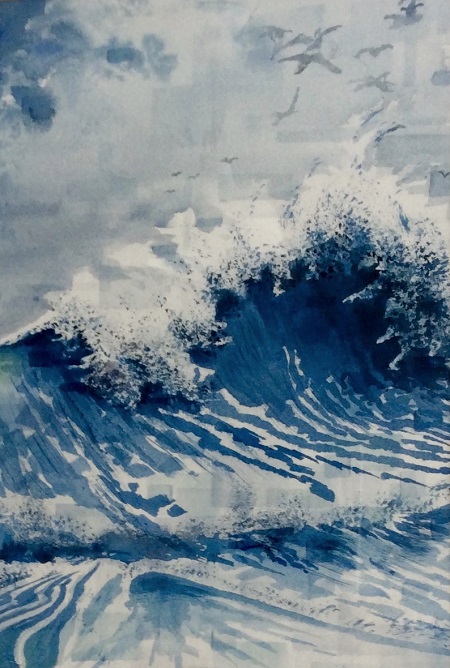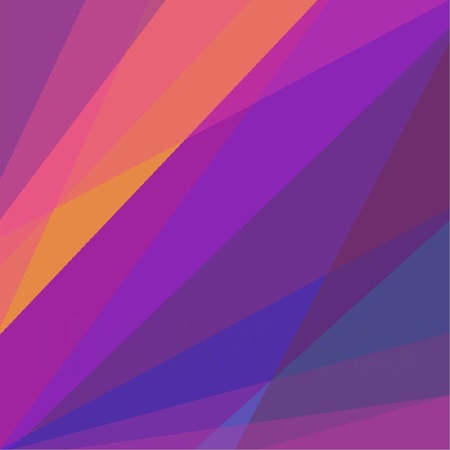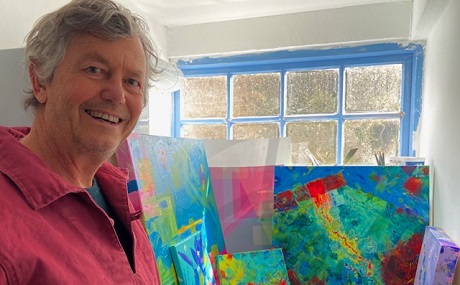Understanding the abstract artist07/02/2022Author: Iain Dryden
The process Moving beyond formative work is an enormous challenge for the artist, for there are no guidelines, you stand upon an arête, alone in the void, trusting creativity will flow through your fingers. You have left the world where a face, a seagull or a line of trees will inspire a formative image, neither can you learn from the masters. Here, in this suspended space, you must rely on instinct.
And that is scary for it has often been said it takes twenty to a hundred attempts to get an abstract that works. Imagine that. Toss the rest into the bin. I don’t. I horde them and try to understand what went wrong. The great watercolourist John Blockley once told me to keep mistakes and learn from them. John’s iconic work, now widely copied, was the best of watercolour painting. When I was painting a barn not far from his home, John grabbed my flat splay brush, “Can I have a go, I love this implement!” He took an empty sheet, but I stopped him, “John, work on my painting,” With a nervous smile, he took over for a while, copying the semi-abstract marks which had begun to deconstruct the barn. I’ve kept that half-complete image as a wonderful memento.
Painting an abstract is to leave the path between observed reality and the sparks within one’s imagination. It starts with deforming your formative works, abstracting by breaking and smudging and extending the line of colour around that gull or human figure. Gradually, over the years, you become more and more interested in the abstract.
But the leap to true abstract painting is tough. You enter a totally different world. Your subject is colour and shape without the help of the natural world or objects your eye perceives. This is an intellectual, as well as a perceptive challenge. It begins the second you touch the vast and empty canvas. The marks you make generate their own tensions and relate only to each other, not to a scene beyond. They become your directors, your mind must listen to them. You are literally in the void. As you let your fingers create, you are totally in the moment.
This mindfulness is essential if you are to let the colours and their hues speak and relate, if you are to allow the type of shapes you have decided to use interact with one another. You fall in love with the process to generate an image with feeling. It has to come from the deep self, which is a meditation in itself. You are in touch with your sensual self, closely watching your inner reactions, weighing up each new act against those you’ve laid down, sensing, rather than thinking. It is intoxicating. Time and the room around you slip away, the canvas has become your universe.
The style I am currently involved with is precise. This does not mean it is not spontaneous, it is just that the spontaneity is contained, played with over a long, gentle, reflective period. I find such intensity exhausting, exacting; after some hours I must put the image aside, let it rest with itself. I return the next day and for several days in a row. I sketch new approaches, then abandon these. I turn to another creation. Then go back to the first when I’m ready. In this rotational manner, I work gradually developing several related images over many weeks. But then so did John Blockley. His studio abounded in half-done work, most of which one day became a finished item.
At the end, the rational mind needs to wake up again and work with the instinctual so that the image has a completeness. You just know when it is right. I haven’t even started to talk about colour, but then maybe the next blog could explore that.
|
Understanding the abstract artist |




Comments
Ruth McCabe - 14/02/2022 00:00
Interesting to read another abstract artist's take on the process.